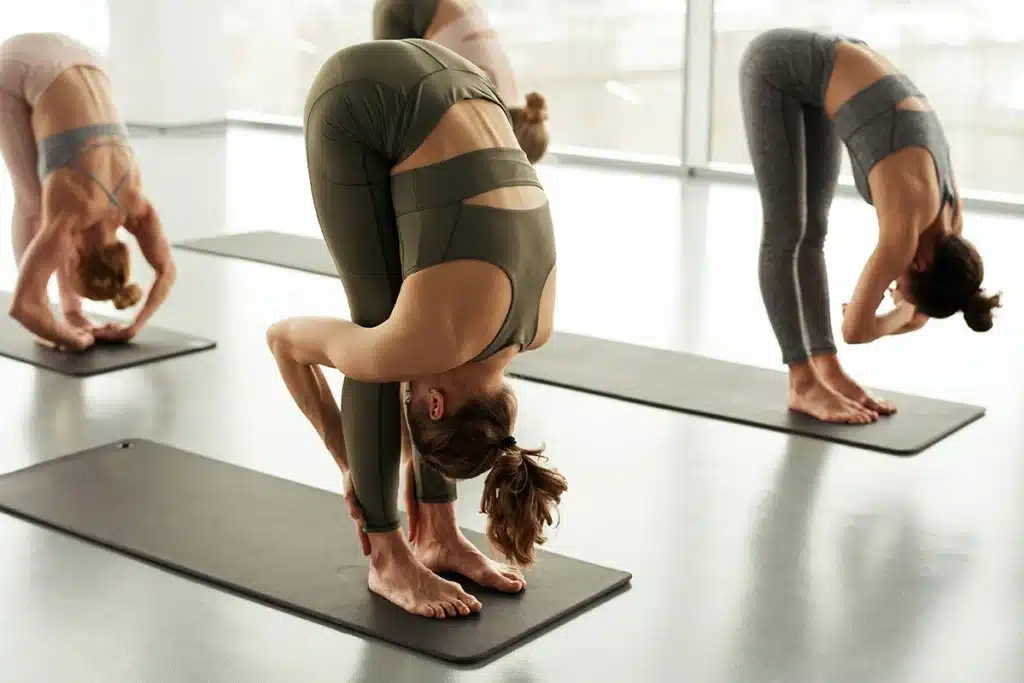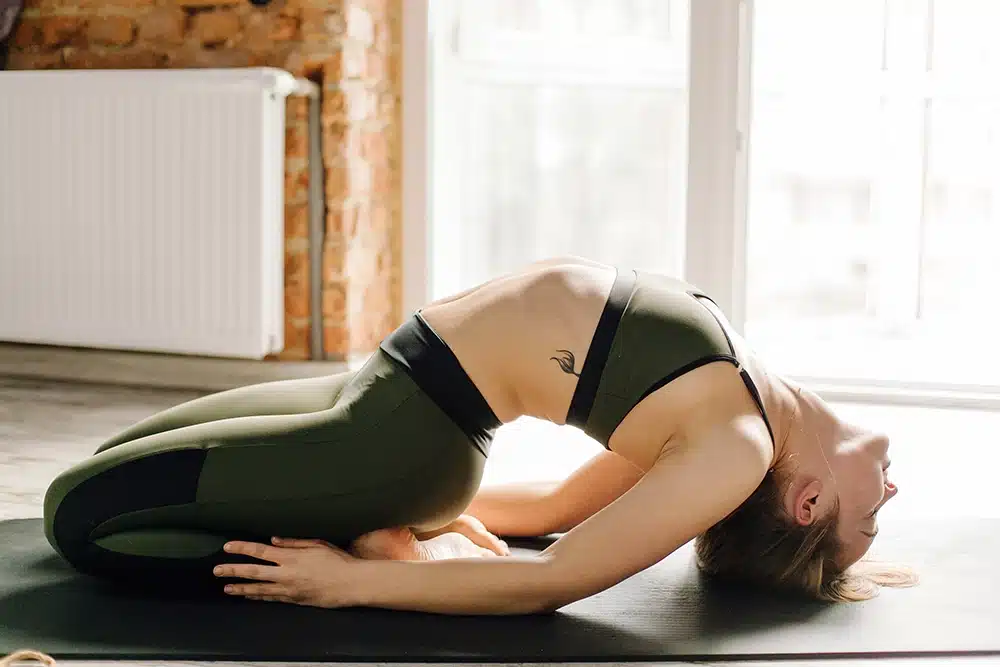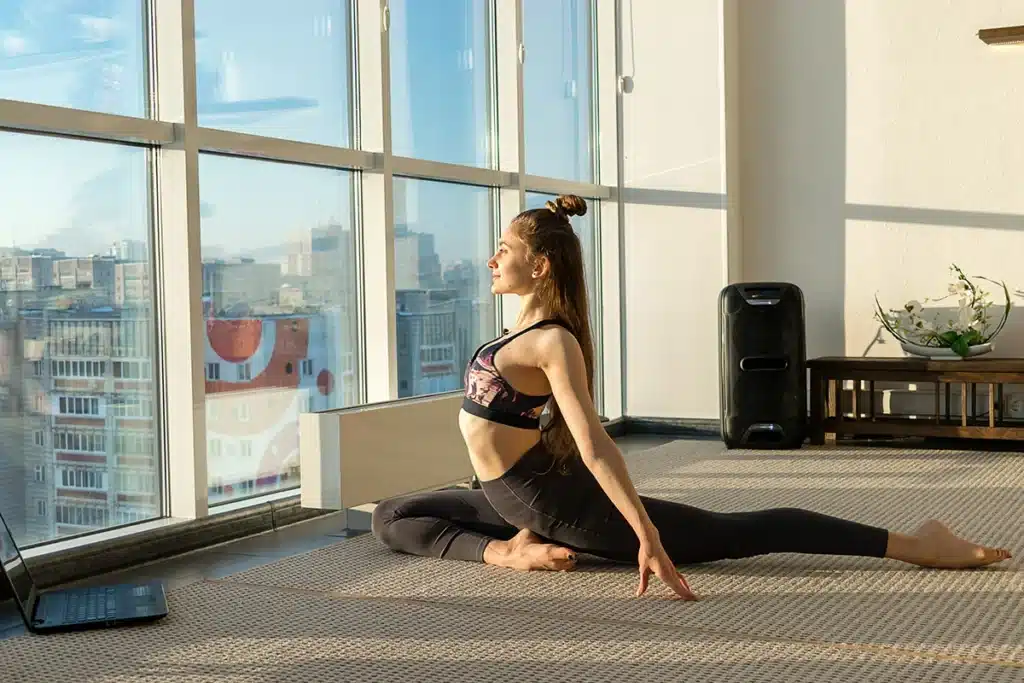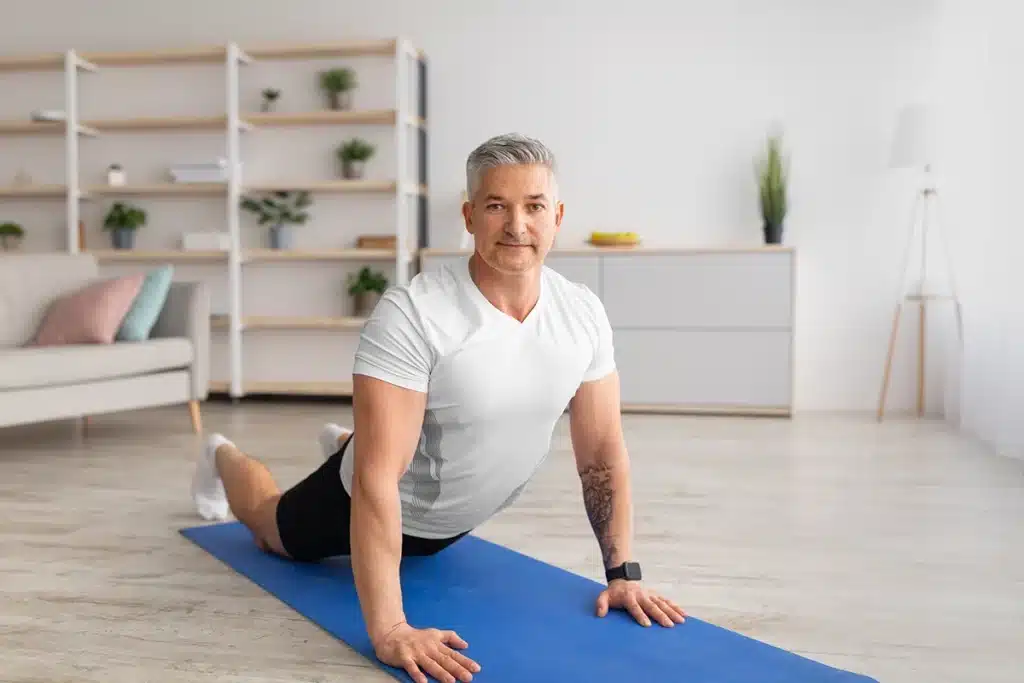
Table of Contents
ToggleIn our fast-paced world, neck pain has become a common issue, affecting many of us daily. Whether it’s due to long hours in front of a computer or the constant downward gaze at our smartphones, neck pain can significantly impact our quality of life.
But there’s a natural and effective solution at hand – yoga. In this article, titled “15 Yoga Poses for Neck Pain Relief: Effective Techniques” we will explore how yoga can be a transformative tool for alleviating neck pain.
By incorporating specific yoga poses into our routine, we can address the root causes of neck discomfort and pave the way for lasting relief and improved neck health.
To effectively use yoga for neck pain relief, it’s crucial first to understand the anatomy of the neck and why pain occurs. The neck, or the cervical spine, is a complex structure made up of bones, muscles, nerves, and ligaments, all working together to support the head and enable its movement.
However, this delicate balance can be disrupted by various factors, leading to pain and discomfort.
Understanding these causes is the first step towards using yoga for neck pain relief. By identifying the root of the problem, we can target our yoga practice to address specific issues effectively.

Let’s explore how to perform these yoga poses for neck pain relief, ensuring you get the most benefit from your practice.
Incorporating these poses into your yoga routine can help in further alleviating neck pain, increasing flexibility, and strengthening the muscles around the neck and upper back. Remember to practice each pose mindfully and listen to your body’s signals.

Yoga offers a holistic approach to managing and relieving neck pain. The practice of yoga involves a combination of stretches, strengthening exercises, and mindfulness techniques, making it an ideal remedy for neck discomfort. Here’s how yoga helps:
In the next sections, we will delve deeper into specific yoga poses that are especially beneficial for neck pain relief and provide detailed instructions for practicing them safely and effectively.
When it comes to using yoga for neck pain relief, certain poses are particularly beneficial. These poses focus on stretching and strengthening the muscles in and around the neck and upper back, promoting flexibility, and reducing tension.
Let’s explore some of these effective yoga poses.
Each of these poses, when practiced regularly, can significantly contribute to alleviating neck pain. In the following sections, we will provide step-by-step instructions for these poses, ensuring you can practice them safely and effectively.

While yoga can be incredibly beneficial for neck pain relief, it’s crucial to practice safely to avoid injury and ensure the most benefit. Here are some guidelines to keep in mind:
“How often should I practice these yoga poses?” is a common question. Here’s a guide to help you integrate these poses into your routine for optimal neck pain relief:
Remember, the goal of using yoga for neck pain relief is not just to alleviate current discomfort but to build a stronger, more flexible body that’s less prone to future pain.
Incorporating yoga into your routine can do more than just provide temporary relief; it can also prevent future occurrences of neck pain. Here’s how:
By incorporating these practices into your daily life, you can significantly reduce the risk of future neck pain and improve your overall quality of life.

While yoga is a powerful tool for neck pain relief, it’s often most effective when combined with other healthy lifestyle practices. Here are some complementary approaches:
For those interested in exploring additional noninvasive treatments for neck and back pain, the Cleveland Clinic offers valuable insights into other effective methods such as acupuncture and osteopathic manipulations. To learn more, read their comprehensive article on the topic.
In conclusion, yoga offers a gentle, effective, and holistic approach to alleviating and preventing neck pain. From the Child’s Pose that soothes and stretches your neck and spine to the strengthening Cobra Pose, yoga provides a range of tools to address the root causes of neck discomfort.
By practicing the poses outlined in this article, you can enjoy greater flexibility, improved posture, reduced stress, and a stronger, healthier neck.
Remember, the key to success in using yoga for neck pain relief lies in regular, mindful practice. It’s not about performing each pose perfectly but about listening to your body and respecting its limits.
Consistency in practice, coupled with a lifestyle that supports neck health, can lead to significant improvements.
Yoga is more than just a set of exercises; it’s a journey towards better health and well-being. As you incorporate yoga into your life, you may find that it not only helps your neck but also brings a sense of balance and peace to your entire being.
So, take it one step at a time, one breath at a time, and embrace the journey of healing and self-discovery.
GET IN TOUCH +
285 Sills Road
Building 5-6, Suite E
East Patchogue, NY 11772
(631) 475-5511
184 N. Belle Mead Road
East Setauket, NY 11733
(631) 675-6226
GET IN TOUCH +
285 Sills Road
Building 5-6, Suite E
East Patchogue, NY 11772
(631) 475-5511
184 N. Belle Mead Road
East Setauket, NY 11733
(631) 675-6226
SUBSCRIBE TO OUR NEWSLETTER +
Send us a Google review. Click this link and let us know how we did!
Review us on Yelp too.